
Hi! I’m Sarah. A late diagnosed autistic adult. I’m an author, artist, home educator, and former academic. You can learn more about me and my work here. This post is my introduction to autism and neurodivergence. It is based on self directed research and my own lived experience.
What is neurodivergence?
The word neurodivergence is made of two parts. Neuro meaning brain. And divergence meaning to differ. Neurodivergence means that your brain processes the world differently.
Every human is unique, but most brains have certain things in common.
Neurodivergent folks experience the world differently. Our brains are processing information in different ways. There are lots of types of neurodivergence including dyslexia, dyscalculia, synesthesia, OCD, dyspraxia, etc. Each with specific ways the brain differs from most people.
My lived experience is centered on autism and sensory processing differences so I’m going to focus on these. But there is overlap with other types of neurodivergence (particularly ADHD.)*
Autism is a spectrum.
The most important thing to understand about autism (and more broadly neurodivergence) is that every person is unique.
There isn’t one way to be autistic. There is a spectrum of experience.
This isn’t a rainbow from “less autistic” to “more autistic”.

In my experience it is more like a color wheel that’s constantly in motion.
The reason I describe the autism spectrum as in motion or flux is that my experience varies wildly based on external and internal factors (environment, clothing, health, access to supports, hunger, anxiety, etc.) This means my capacity varies from day to day and moment to moment.
I also find that my autistic traits are almost always rooted in sensory differences. So this a helpful place to start. I made this video to share my experience of overstimulation. (There’s also a shorter 30 second version here.)
That’s how it feels (for me) to experience sensory overload or overstimulation. The internal sensation can range from something like overwhelm and numbness to physical pain depending on the trigger. Remember this varies from person to person.
Why do I feel things so intensely?
Why might an autistic person experience “normal” sensory input as pain or sensory overload? Because our brains process information differently.
Take a look at this brain scan.
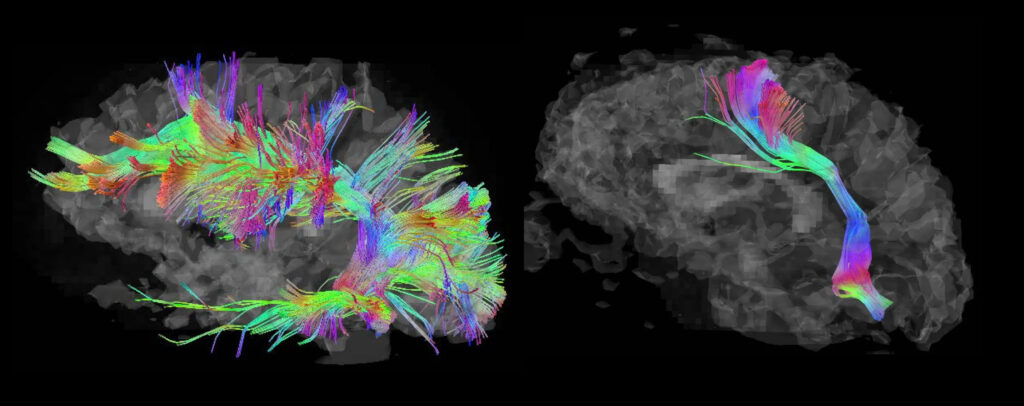
The scan on the left is an autistic brain processing language.
The scan on the right is someone without autism.
I love this image because you can see how much more information an autistic person is processing at any given moment. The non autistic brain is using a process called sensory modulation to focus on the speaker’s voice. The autistic brain continues taking in lots of other information simultaneously.
I believe understanding sensory modulation is essential for properly empathizing with and supporting autistic individuals of all ages.
I’m working with an autistic illustrator to create a children’s picture book about this. You can support the project by preordering or donating a copy here.

What this means about autistic traits.
You’ll notice I don’t call these symptoms. Being autistic is NOT a disease or an epidemic. It is simply a different way of processing the world. There are strengths and challenges that come with being autistic. Just as there are strengths and challenges that come with any neurotype.**
Autistic traits are rooted in experiencing the world differently. They are not deficits. They can be strengths.
Let’s start with autistic strengths because so often we do the opposite. We rarely seek diagnosis because of our strengths. Therefore many autistic people who have the proper support structures in their lives do not even realize they are autistic.
When looking at any list, remember the spectrum, no autistic individual has all autistic traits. Some are even contradictory. How many traits you need for a diagnosis is not the point here, but if you see yourself reflected in these lists you may consider identifying as neurodivergent.
Autistic Strengths
Source: AUTISM HANDBOOK BY Andi Putt, M.S., CCC-SLP
- Pattern Recognition
- Hyperfocus
- Attention to Detail
- Analytical
- Creative Thinking
- Strong Sense of Justice
- Hyperlexia (early self taught reading)
Having a hyper connected brain means we are often great at recognizing patterns and making connections that others do not. This gives us a unique perspective and can enable us to make art, solve problems, and contribute in meaningful ways.
My autism is central to my creative practice making art and writing books. I made the work below to express the overstimulation caused by a single clothing tag. It’s been in multiple exhibits across the country including a gallery in New York City.
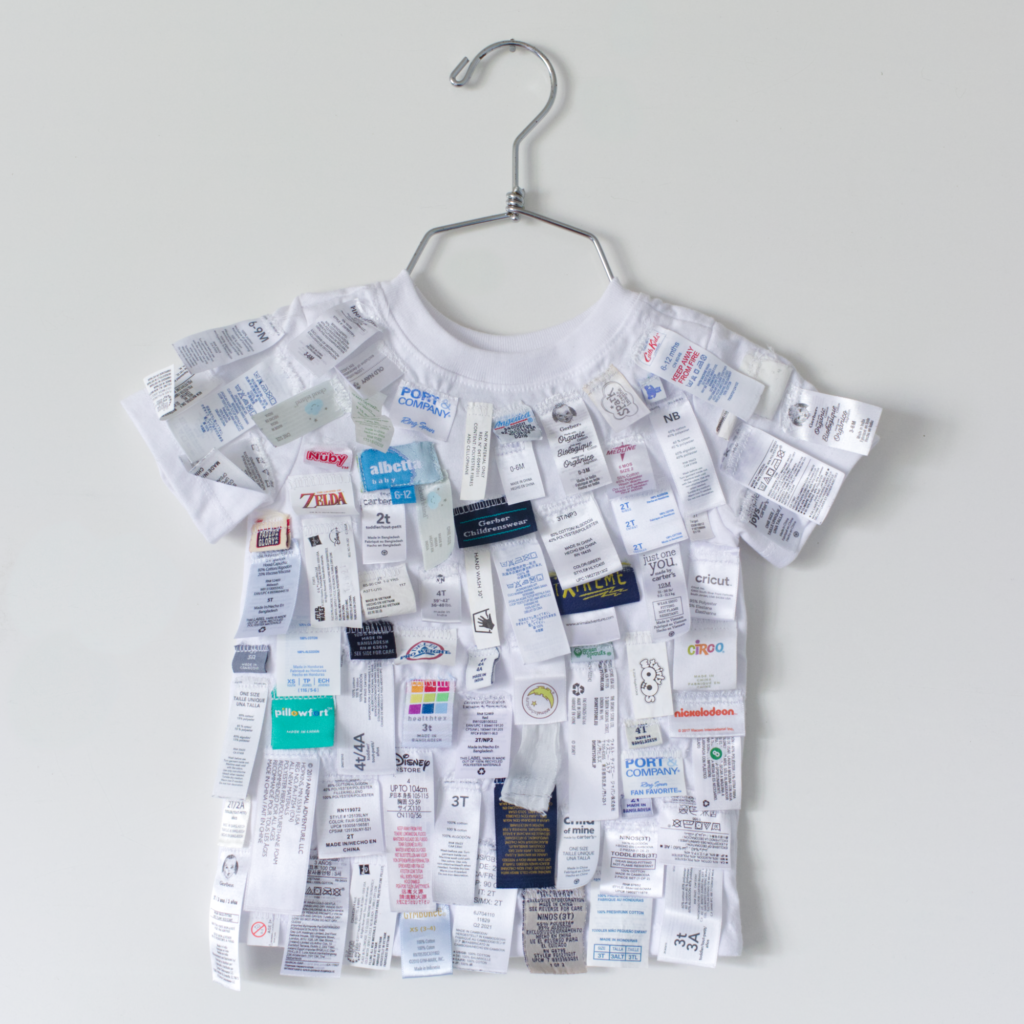
Autistic Challenges
Having strengths does not negate our challenges or our need for supports.
Here are some of the ways autism can present (keeping in mind every person is unique and no one person has all of these traits.) Most of these come down to sensory modulation, but can externalize in different ways.
Processing Language
Remember the rainbow brain? That scan is happening when an autistic person is listening to spoken language. Most brains modulate or mute sensations it deems necessary to help you focus.
This means if you’re in a noisy restaurant non autistic brains “turn down” the volume on other conversations, cutlery being sorted, appliances in the kitchen, chewing noises, and music playing. This happens automatically, but autistic brains do not always have the ability to “tune it out” and focus on a single sound.
This can make listening, conversation, and learning spoken language challenging. We also process language itself in a completely different way – learning to speak in chunks rather than words. I’ve written a bit about that here in the context of learning a second language.
supports
Some autistic people are nonspeaking and use devices like an AAC tablet to speak for them. This is not a sign of lack of intelligence, but a difference in processing language. Others may use sign language, communication cards, or gestures. We need to respect all forms of communication equally and not favor spoken language.
Supports for language also include closed captions on video content, more time to process spoken language, or text based communication (email or text versus phone calls.)
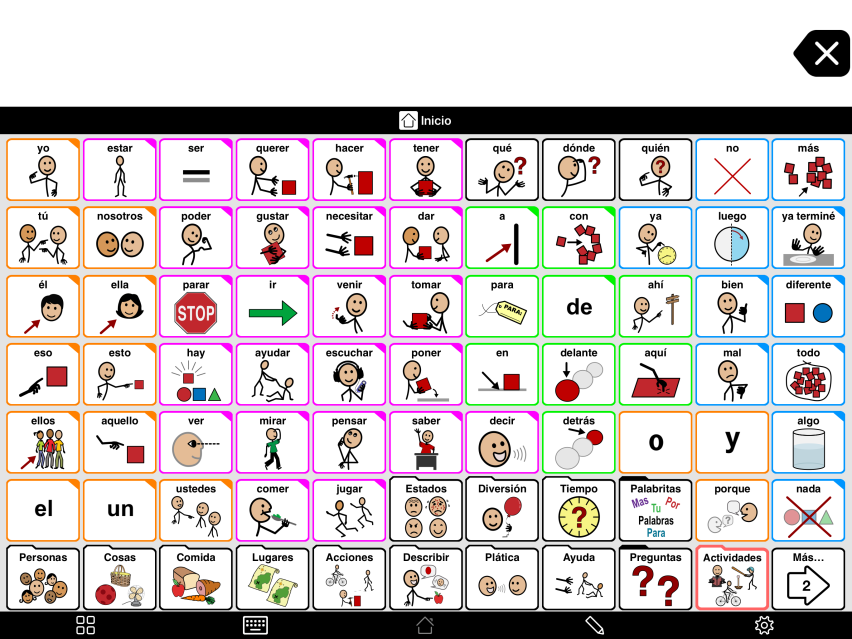
Processing Social Norms
Autistic people often have social differences. We usually communicate quite well with each other, but can struggle to socialize with neurotypicals. This too, may come down to sensory modulation. Being assaulted with sensory input we have to work hard to consciously process social situations that non autistics navigate intuitively. This is not a flaw, but a difference.
The problem comes when we are judged against a neurotypical standard.
For example, an autistic person may struggle to make eye contact because they are trying to read your lips to understand what you are saying. Or they may find eye contact physically painful because it is so intimate and emotionally intense. This is not a flaw, but is often perceived as a “lack of confidence” in a culture that values eye contact. Other autistics may have not trouble with eye contact at all. Or only when dysregualted.
Autistic people also tend to be direct and honest. We can struggle with layers of subtext and take people at their word while missing the hidden meaning.
SUPPORTS
Never forcing eye contact.
Understanding autistic culture has different social norms. For example “infodumping” or sharing deeply about your passions, is a way that autistic people connect, but is often seen as a social flaw by neurotypicals.
Clear, direct language.
Breaking down social expectations in a transparent way.

Processing Transitions or Changes
This is a complex issue, but speaking for myself, I often manage hypersensitivity and social differences by careful planning and mental preparation.
Small changes in plans can result in big instances of dysregulation (intense emotions that can present as meltdowns or shutdowns). A meltdown is an intense outburst of emotions (crying, yelling, shaking) and a shutdown is the opposite (internalizing and struggling to communicate.) Both are signs that your nervous system has been asked to take on more than it can safely process.
With children this can be misunderstood as willful disobedience when they are struggling to process changes in plan or transitioning between activities.
Autistic people are more likely to become dysregulated if we are overstimulated which is why understanding sensory supports is key. Another layer to this is gestalt thinking and episodic memory.
SUPPORTS
Carefully communicating transitions and changes.
Allowing more time for mental processing.
Having tools for self regulation if dysregulation occurs (fidgets, heavy blanket, etc.)
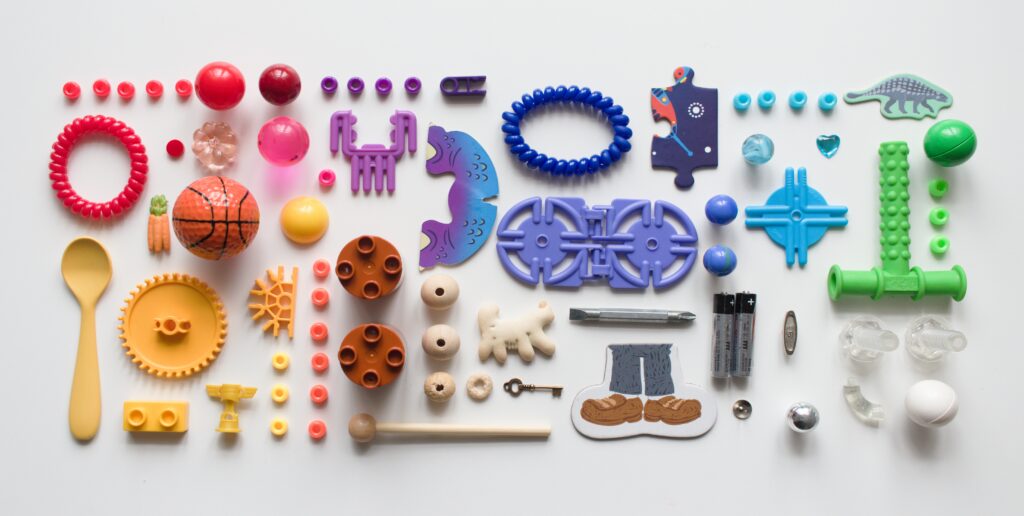
More Autistic Traits
Autism is complex and it’s impossible to cover all of the possible differences in a single blog post. Here are more traits that some autistic people have.
- Enthusiasms (deep interests commonly referred to as “special interests”)
- Time blind
- Motor planning challenges
- Food aversions
- Executive function difficulty (struggling to break down and prioritize tasks)
- Echolalia (repeating words, quotes or phrases)
- Literal thinking
- Struggling in large groups
- Preferring solitude
- Hyper-empathetic OR struggles to understand emotions
- Joy in atypical play (like lining up toys)
- Rejection sensitivity
- Auto-didactic (learn best by self directed learning processes)
- Perfectionism
- Scripting social situations (planning conversations in advance)
- Sensory seeking OR sensory avoidant (or both depending on the sensory input)
- Difficulty processing body cues like hunger
- Trouble sleeping

We also have various ways to self regulate our hypersensitive nervous systems.
- Stimming (repeated movements like flapping hands, rocking, tapping, or bouncing)
- Repeatedly reading or watching favorite stories
- Creativity (art, dance, music, writing, LEGO, Minecraft, etc.)
- Whole body movement (sports, walking, weight training, swimming, etc.)
- Deep pressure to self regulate (weighted blankets, sitting on hands, pretzel sitting)
- Fidgets (stress balls, spinners, rings, etc.)
- Familiar foods or chewy sensory supports
- Engaging deeply with interests
- Safe, quiet place (alone or with trusted people)
If you’d like to learn more about sensory processing I created a whole presentation about neurodivergence that digs into the 8 senses (that’s not a typo!) here.

Masking
Something that can complicate a full understanding of autism is masking. An autistic person who is able to mask can sometimes push through situations that cause them pain or dysregulation. People who mask often experience a delayed reaction and may meltdown or shutdown when they are next in a safe place.
High masking autistics often study and imitate expected social behaviors, but this takes a toll and uses a lot of focus and energy that could be used for other things. The ability to mask varies from person to person, but is a serious danger to all autistic people. Masking can pushing your brain and body further than it has capacity to handle. Over time repeated masking without adequate support and recovery can cause serious consequences to mental and physical health.
Before becoming a parent I was able to mask in most situations. I could push through sensory pain and dysregulation because I had adequate time and space to reset afterwards. Now that I have less time I have to be careful to honor my autistic limits and use necessary supports to prevent a serious mental health collapse.

To Assess or Not to Assess
I believe the assessment process as it stands is incomplete because it is focused on external behaviors and not the internal experience of the person being assessed. This is because the autism evaluation was created by neurotypicals based on autistic traits they consider undesirable.
I went through an autism diagnosis as an adult, but I’m not sure I’d do the same if presented with the option today. Identifying as autistic and neurodivergent was life changing. But I had to learn to self advocate for my needs. The diagnosis paper itself did nothing for me.
For kids the issue is more complex as an official diagnosis is often needed to access certain supports (educational accommodations, etc.)
Whether or not you choose to seek a formal diagnosis, remember that your needs are valid. It’s okay to share how you feel and ask for the supports you need. The real power comes in reframing neurodivergent traits as differences and not flaws. And learning to self advocate.
How to be an ally.
If you have an autistic or neurodivergent person in your life the best support you can give is to listen and believe them. The reaction that you see is based on their real internal experience and is not disproportionate or oversized for what they are feeling inside.
Parents or partners of autistic people should always ask how best to offer support because everyone is different.
Look for ways to minimize sensory pain and overstimulation.
Protect space needed to reset and self regulate (as listed above.)
Keep listening. And consider whether you may be a highly masking neurodivergent person. We can sometimes be the hardest on each other. Just because you can endure or mask through something does not mean every neurodivergent person can. not everyone has the same capacity to mask.
What next?
Check out my digital zine about the autism spectrum.
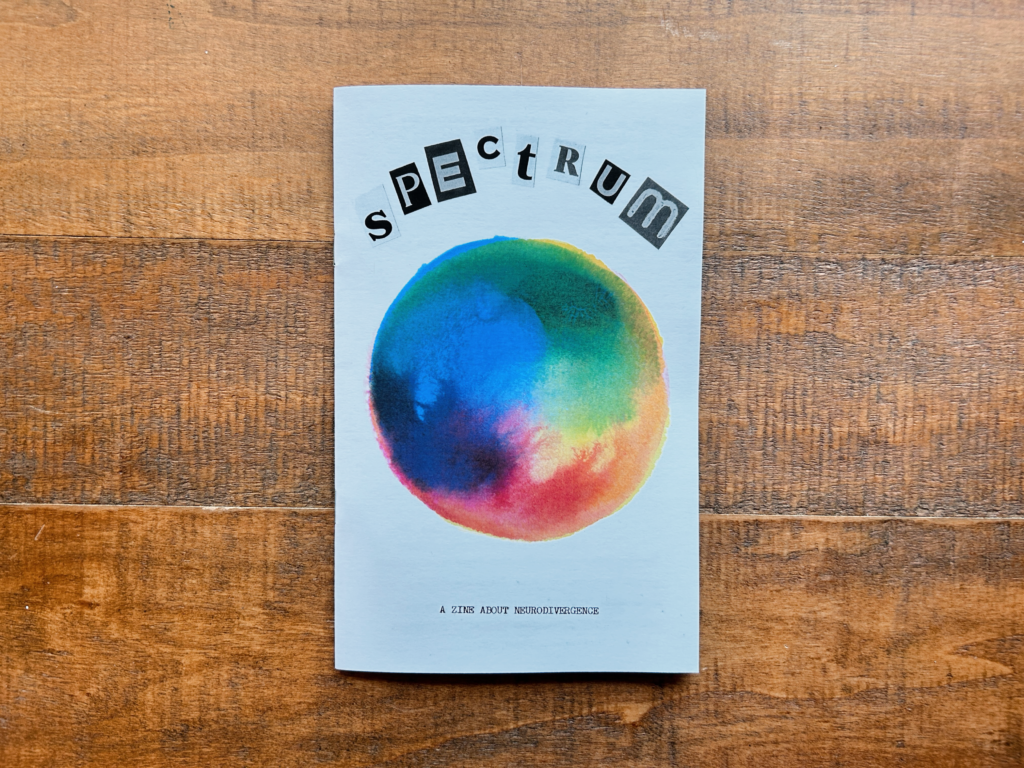
Or visit my Neurodiversity Affirming Library here for my favorite educational resources including: podcasts, videos, books, blogs, and more.

* I have been professionally diagnosed with autism, but also have traits of ADHD such as time blindness and difficulties with object constancy. Having knowledge of these traits and functional coping strategies I have no interest in pursuing an ADHD diagnosis at this time.
† Illustration by @autistic_sketches on Instagram
‡ Artwork via Felipe Pantone on Instagram
§ Brain Scan images via Schneider Lab
** Neurotype is a term used to describe your brain’s processing style: autistic, ADHD, OCD, etc. If you are not neurodivergent your neurotype is neurotypical. Being neurotypical just means that your brain is processing the world like most others. This means the dominant culture has been made to support the way your brain processes the world around you. You are surrounded by supports for your neurotype every single day.
† † Printable Cards from Sensory Diet Workbook by Harkla (Affiliate Link)

